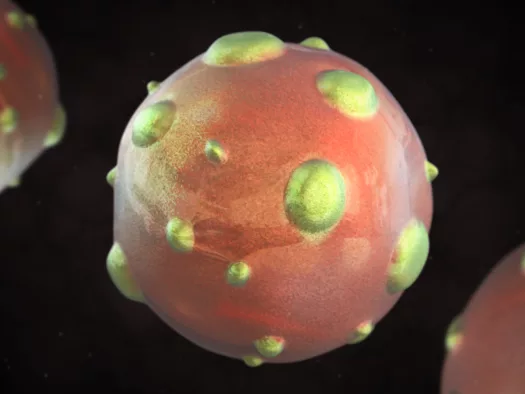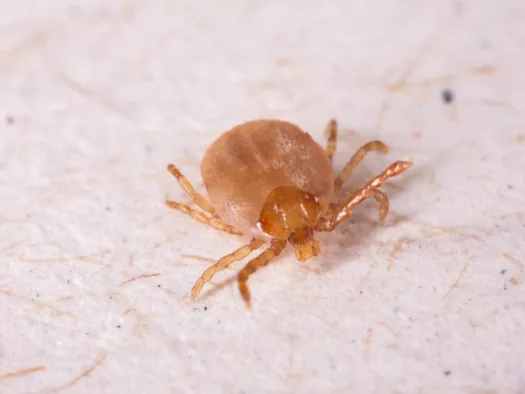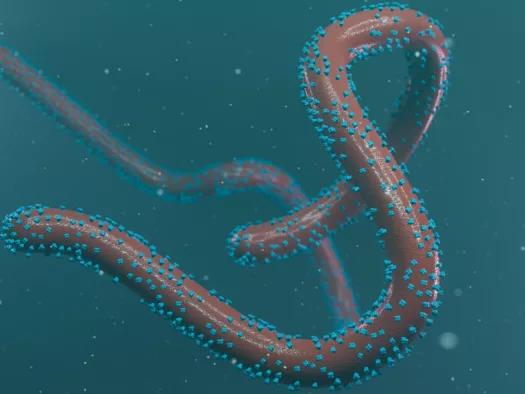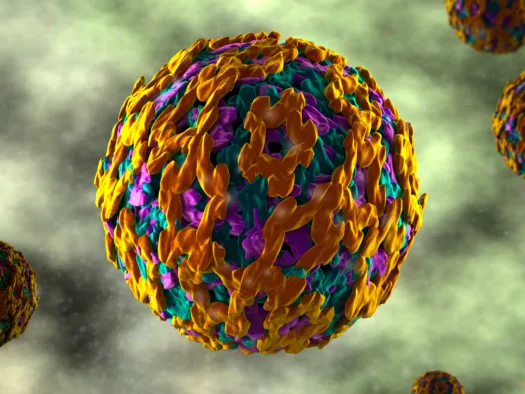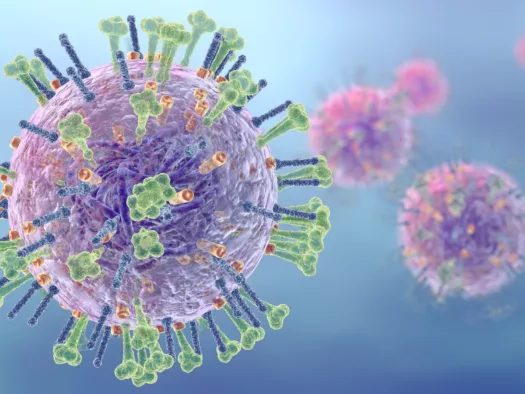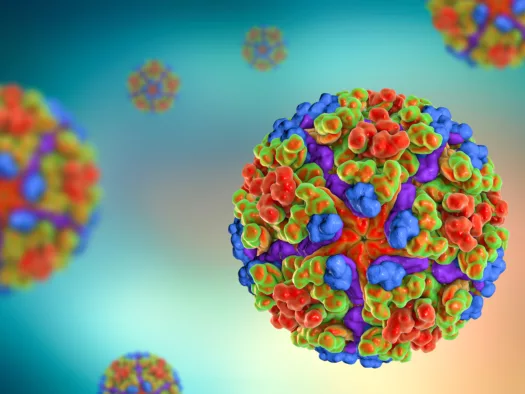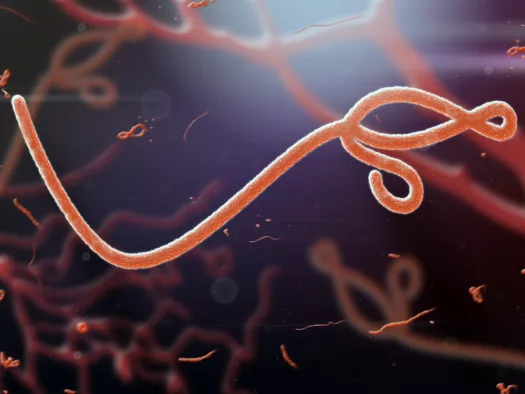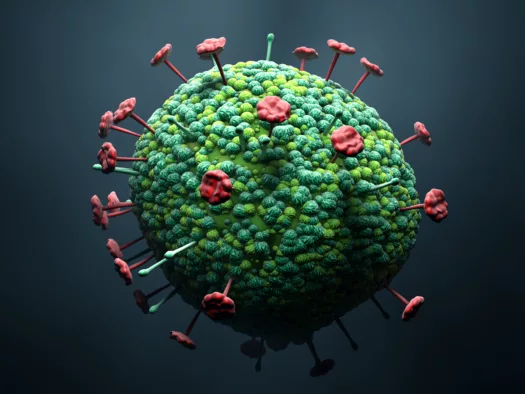
PROFILE: PATHOGENS WITH THE POTENTIAL TO SPREAD
THE NEXT PANDEMIC?
The World Health Organization has warned that pathogens which jump from animals to humans are becoming increasingly common. Here you can read why. Researchers are working to find out how viruses spread, what damage they do, and how we can prevent them. Here are ten pathogens with the potential to cause pandemics. Click on the viruses to go to the Gavi website, where you can learn more about each of them.

RIFT VALLEY FEVER
Where does it occur?
Egypt, Kenya, Madagascar, Somalia, Sudan, Tanzania, Saudi Arabia and Yemen
How does it spread?
Humans become infected through contact with infected livestock such as cows, sheep, camels and goats; the virus is also transmitted by around 50 mosquito species
Pandemic potential?
Apparently minor, but, because of its impact on agriculture, the virus is classified as a Category A bioterrorism agent on account of its potential to decimate livestock and cause the collapse of the agricultural sector – an eventuality that could lead to social disruption
Photo: Kateryna_Kon / Adobe Stock
HANTAVIRUS
Where does it occur?
Worldwide
How does it spread?
Rodents get infected but don’t become ill; transmission to humans through contact with the aerosols of infected rodents’ saliva, urine or faeces; human-to-human transmission has been documented in Argentina and Chile
Pandemic potential?
Low; around 200,000 cases, including those involving hantavirus-like symptoms, are reported annually worldwide; epidemics with human-to-human transmission of the Andes virus show that the virus is capable of developing into a virus with continuous transmission from human to human
Photo: gaetan / Adobe Stock
CRIMEAN-CONGO HAEMORRHAGIC FEVER
Where does it occur?
Eastern Europe, entire Mediterranean region, Northwest China, Central Asia, Southern Europe, Africa, Middle East, Indian subcontinent
How does it spread?
It can be transmitted through tick bites, as well as contact with the blood or tissue of infected animals; cattle, goats, sheep, rabbits and ostriches can be carriers; people in the livestock industry are frequently infected; human-to-human infection occurs through contact with blood or bodily fluids or as a result of the inadequate sterilisation of medical equipment
Pandemic potential?
Still low; however, the spread of the tick species Hyalomma marginatum, which carries the virus causing Crimean-Congo Haemorrhagic Fever, is increasing the risk of animal-to-human transmission; climate change may increase the virus’ spread
Photo: tacio philip / Adobe Stock
LASSA FEVER
Where does it occur?
Benin, Ghana, Guinea, Liberia, Mali, Nigeria, Sierra Leone, but also in the USA and Europe
How does it spread?
Through Mastomys, a rat species that does not itself become ill but merely excretes the virus, which in turn infects humans; people living in rural areas and in cramped and unsanitary conditions are particularly at risk of contracting the virus; where food such as cereals is sold in open containers at outdoor markets, the risk of contamination with rat faeces or urine is high
Pandemic potential?
Real existing threat; a long incubation period and the fact that four out of five people infected with Lassa fever do not show any symptoms means the disease is easily spreadable through international travel
Photo: Kateryna_Kon / Adobe Stock
MARBURG VIRUS
Where does it occur?
Angola, Democratic Republic of the Congo, Kenya, South Africa, Uganda, Zimbabwe, Europe and in the USA
How does it spread?
The virus originates from the Egyptian rousette (a megabat species), African vervet monkeys or pigs that are themselves infected; human-to-human transmission through direct contact with blood, secretions, organs or other bodily fluids from infected humans, but also through contact with materials contaminated by infected fluids
Pandemic potential?
High, on account of human-to-human transmission and its long incubation period; outbreaks in Europe and the United States have shown that globalisation and travel have increased the risk of its worldwide spread; given its high mortality rate, a major outbreak could have catastrophic consequences
Photo: Lee / Adobe Stock
YELLOW FEVER
Where does it occur?
Tropical regions of Africa, Central and South America; on the rise in the USA, China and Europe
How does it spread?
Through the Aedes aegypti mosquito, which infects monkeys and humans in its habitat; subsequent mosquito bites can spread the disease to other persons; other carriers include Aedes mosquitoes and Haemagogus mosquitoes, both of which are found in Central and South America
Pandemic potential?
High; it takes only a few introductions of the virus by travellers from Africa or South America to spread rapidly; since there has never been yellow fever in Asia, and the population as a result has no natural immunity, a spread could have catastrophic consequences; because of climate change, the pathogen is expanding its area of circulation
Photo: decade3d / Adobe Stock
INFLUENZA
Where does it occur?
Worldwide
How does it spread?
Through droplets in the air caused by the sneezing or coughing of an infected host; birds, pigs and other zoonotic hosts serve as reservoirs for the virus and can transmit it to humans
Pandemic potential?
High; since the Spanish Flu, there have been three pandemics – H2N2 in 1956/57, H3N2 in 1968, and H1N1 in 2009; even though epidemics of various “seasonal” influenza strains occur each winter – and are particularly dangerous for young children and the elderly – the virus is considered low-risk by most of the public
Photo: Axel Kock / Adobe Stock
CHIKUNGUNYA
Where does it occur?
Africa, Asia, Europe, Caribbean and the Americas
How does it spread?
Through the mosquito species Aedes aegypti and Aedes albopictus (tiger mosquito); breeding sites near residential areas increase the risk of infection; small animals may act as the disease’s “reservoirs”, and the latter can trigger further outbreaks later
Pandemic potential?
High; as recently as 2004, Chikungunya developed in the global South into a pandemic involving more than one million cases; climate change threatens to make the disease endemic in the Americas and in parts of Europe
Photo: Kateryna_Kon / Adobe Stock
EBOLA VIRUS
Where does it occur?
Democratic Republic of the Congo, Guinea, Liberia, Sierra Leone
How does it spread?
Natural carriers are fruit bats, porcupines and other non-human primates that transmit the virus to humans; transmission from person to person through direct contact with blood, secretions, organs or other bodily fluids from infected persons, as well as through contact with contaminated surfaces and materials
Pandemic potential?
Low; the Ebola virus is transmitted primarily through the direct exchange of bodily fluids; according to researchers, aerial infection is rare; Ebola kills people before they have a chance to spread the virus
Photo: jaddingt / Adobe Stock
NIPAH VIRUS
Where does it occur?
Southeast Asia, Bangladesh, India, Malaysia and Singapore
How does it spread?
Through fruit bats: transmission to humans who consume products contaminated by animal faeces; infection also through other animals; human-to-human transmission through respiratory secretions and saliva
Pandemic potential?
High, because the virus spreads from bats to other animals and humans; 60 per cent of the world’s population lives in the region where the Nipah virus originates; deforestation causes humans, livestock and wildlife to move closer together, and this increases the risk of disease spread; because of its mortality rate, the virus has been classified as a bioterrorist threat in many places
Photo: Design Cells

